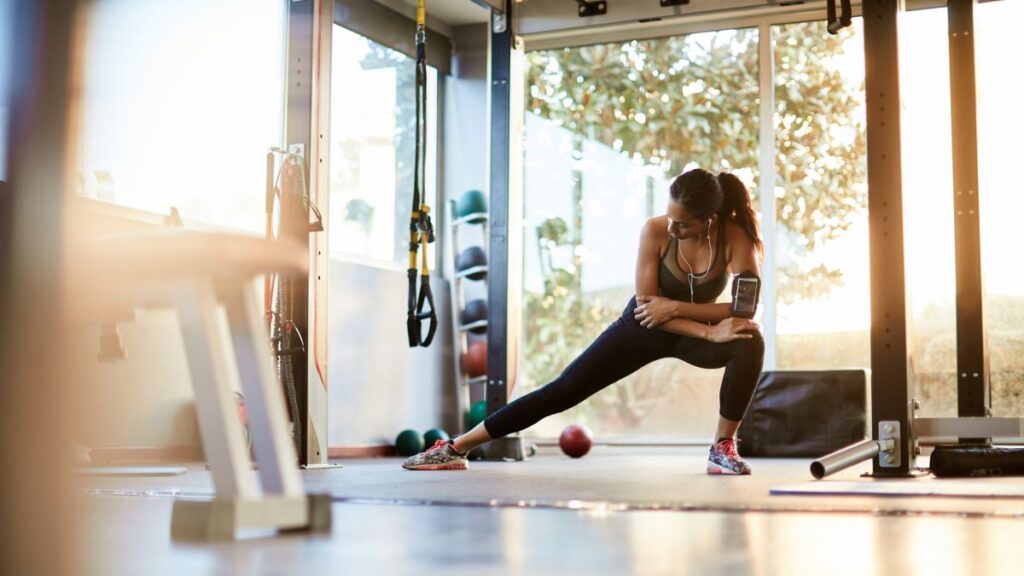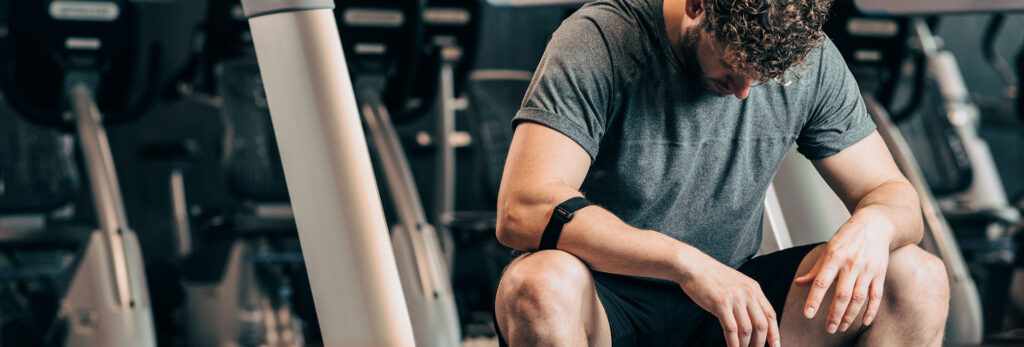How Exercise Can Change Your Life

We all know that exercise is good for our physical health. But did you know that it can also have a profound impact on our mental health? In this article, we’ll explore the various ways in which exercise can change your life for the better. We’ll look at the different types of exercises that are most beneficial and provide some tips on how to get started with a routine. So whether you’re looking to improve your physical health, your mental well-being, or both, read on to find out how physical activity can change your life.
The benefits of regular workouts
We all know that physical activity is good for our physical health. But did you know that it can also have a profound impact on our mental health? In this article, we’ll explore the various ways in which physical activity can change your life for the better.
Regular physical activity has been shown to improve heart health, help control weight, and reduce the risk of developing diabetes. physical activity has also been shown to improve mental health, including reducing stress, anxiety, and depression. Physical activity can also help improve cognitive function and protect against age-related cognitive decline. Finally, regular physical activity can help improve sleep quality.
So whether you’re looking to improve your physical health, your mental well-being, or both, read on to find out how physical activity can change your life.
How physical activity can improve your mental health
Physical activity has numerous benefits for mental health. It can help reduce stress, anxiety, and depression, and can also help to improve sleep quality. Additionally, a regular physical activity routine can increase self-esteem and confidence.

One of the most common mental health benefits of physical activity is stress relief. Physical activity can help to release tension from the body and clear the mind. When we are stressed, our bodies produce hormones like adrenaline and cortisol. These hormones are designed to help us cope with short-term stressors, but they can also have negative long-term effects if we are constantly under stress. Physical activity helps to combat these effects by releasing endorphins, which have mood-boosting properties.
Physical activity has also been shown to be effective in treating anxiety disorders. A study conducted by the University of Georgia found that just 30 minutes of moderate physical activity(such as walking) can immediately reduce symptoms of anxiety by up to 21 percent. The researchers believe that physical activity works to reduce anxiety by distracting the mind from anxious thoughts and providing an outlet for pent-up energy.
Depression is another mental health condition that physical activity can help to treat. Physical activity releases endorphins, which have mood-boosting properties, and it also helps to improve sleep quality. Research has shown that people who do physical activity regularly are less likely to experience depression than those who do not physical activity regularly.
In addition to reducing stress, anxiety, and depression, physical activity can also help improve sleep quality. This is because physical activity helps to regulate the body’s circadian rhythms, which control when we feel sleepy and when we feel awake. A study conducted by the University of Colorado found that people who exercised for 20-30 minutes per day slept better than those who did not physical activity at all. The study participants who exercised also reported feeling more energetic during the day.
Finally, regular physical activity can help increase self-esteem and confidence. This is because when we physical activity our bodies release endorphins, which have mood-boosting properties. Additionally, Regular aerobic physical activity has been linked with increased hippocampal volume in adults..
The types of physical activity that are most beneficial
There are many different types of physical activity that can be beneficial for improving overall health. Aerobic exercise, resistance training, flexibility training, and balance training are all activities that can elevate the heart rate and improve fitness levels.
Aerobic physical activity is any type of activity that raises the heart rate and increases breathing. Some examples of aerobic physical activity include walking, running, cycling, swimming, and dancing. Aerobic physical activity is a great way to improve heart health and increase stamina.
Resistance training is any type of activity that uses weights or other resistance to build muscle mass. Resistance training can help improve bone density, reduce the risk of injuries, and increase strength.
Flexibility training is any type of activity that helps improve range of motion and flexibility. Some examples of flexibility training include yoga, pilates, and stretching. Flexibility training is a great way to reduce the risk of injuries and improve overall mobility.
Balance training is any type of activity that helps improve balance and coordination. Some examples of balance training include Tai Chi and Pilates. Balance training is a great way to reduce the risk of falls and improve overall balance and coordination.
How to get started with a regular physical activity routine
Starting a regular physical activity routine can be daunting, but it doesn’t have to be. The key is to start small and gradually increase the intensity of your workouts. Additionally, it’s important to find an activity that you enjoy and find a time of day that works for you.
One way to get started is to find a workout partner. Having someone to motivate and support you can make a big difference in terms of sticking with your routine. Additionally, setting small goals can help you stay on track. For example, commit to working out three times a week for 20 minutes each time. Once you’ve achieved that goal, you can gradually increase the intensity
and duration of your workouts.
Finally, it’s important to find a time of day that works for you. If you’re a morning person, working out first thing in the morning may be best. However, if you’re not a morning person, working out later in the day may be better for you. Experiment until you find a time that works for you and then stick with it.

In conclusion, exercise can have a significant impact on one’s physical, mental, and emotional well-being. Regular physical activity can improve cardiovascular health, boost the immune system, and lower the risk of chronic diseases such as diabetes, obesity, and cancer. Additionally, physical activity has been shown to have positive effects on mental health, reducing symptoms of anxiety and depression, and improving cognitive function. It can also improve sleep quality, increase energy levels, and enhance the overall quality of life. Making physical activity a regular part of your routine can be challenging, but the benefits are well worth the effort. Whether it’s a daily walk, a yoga class, or a gym session, finding a physical activity that you enjoy can lead to a healthier and happier life.


























































































































































































































































































































































































































































































































































































































































![Fixing [pii_email_aa0fea1a78a192ae7d0f] Microsoft Outlook Error](https://www.huffenpost.com/wp-content/uploads/2023/03/What-Causes-the.jpg)
![Fixing [pii_email_aa0fea1a78a192ae7d0f] Microsoft Outlook Error](https://www.huffenpost.com/wp-content/uploads/2023/03/How-to-fix-the-1-1024x1024.webp)
![Quick fixes for the [pii_email_dbd9dd084703ead3b9cf] Mail Error](https://www.huffenpost.com/wp-content/uploads/2023/03/How-to-Avoid-pii_email_b6b14f95f44a83737071-Outlook-Error-1024x576.jpg)
![How to fix the [pii_email_bbf95bff57a974a71da8] in Microsoft Outlook?](https://www.huffenpost.com/wp-content/uploads/2023/03/How-To-Solve-The-pii_email_9e750e335dfd9d75badb-Outlook-Error.webp)
![How to solve the [pii_email_b6b14f95f44a83737071] Outlook Error](https://www.huffenpost.com/wp-content/uploads/2023/03/How-to-Avoid-pii_email_b6b14f95f44a83737071-Outlook-Error.png)
![Ways to fix the "[pii_email_1fb861393abed78ab415] Error](https://www.huffenpost.com/wp-content/uploads/2023/03/pii_pn_56e685559f213991c933-Error-Causes-and-Solutions2.jpg)
![How to Fix the [pii_email_e2f55b4aa7bb667da6d9] Error](https://www.huffenpost.com/wp-content/uploads/2023/03/How-to-fix-the.webp)
![What Everyone Should Know About [pii_email_59ea919492dfc2762030]](https://www.huffenpost.com/wp-content/uploads/2023/03/pii_email_aa0fea1a78a192ae7d0f-Email-Error-and-Its-Solutions-1024x683.jpg)
![How to Fix the [pii_pn_5359771d15a46e7b88bf] Outlook Email Error](https://www.huffenpost.com/wp-content/uploads/2023/03/pii_email_57a4a2f20ec6813a8481-SMTP-Error-Solution-2.jpg)

























































































